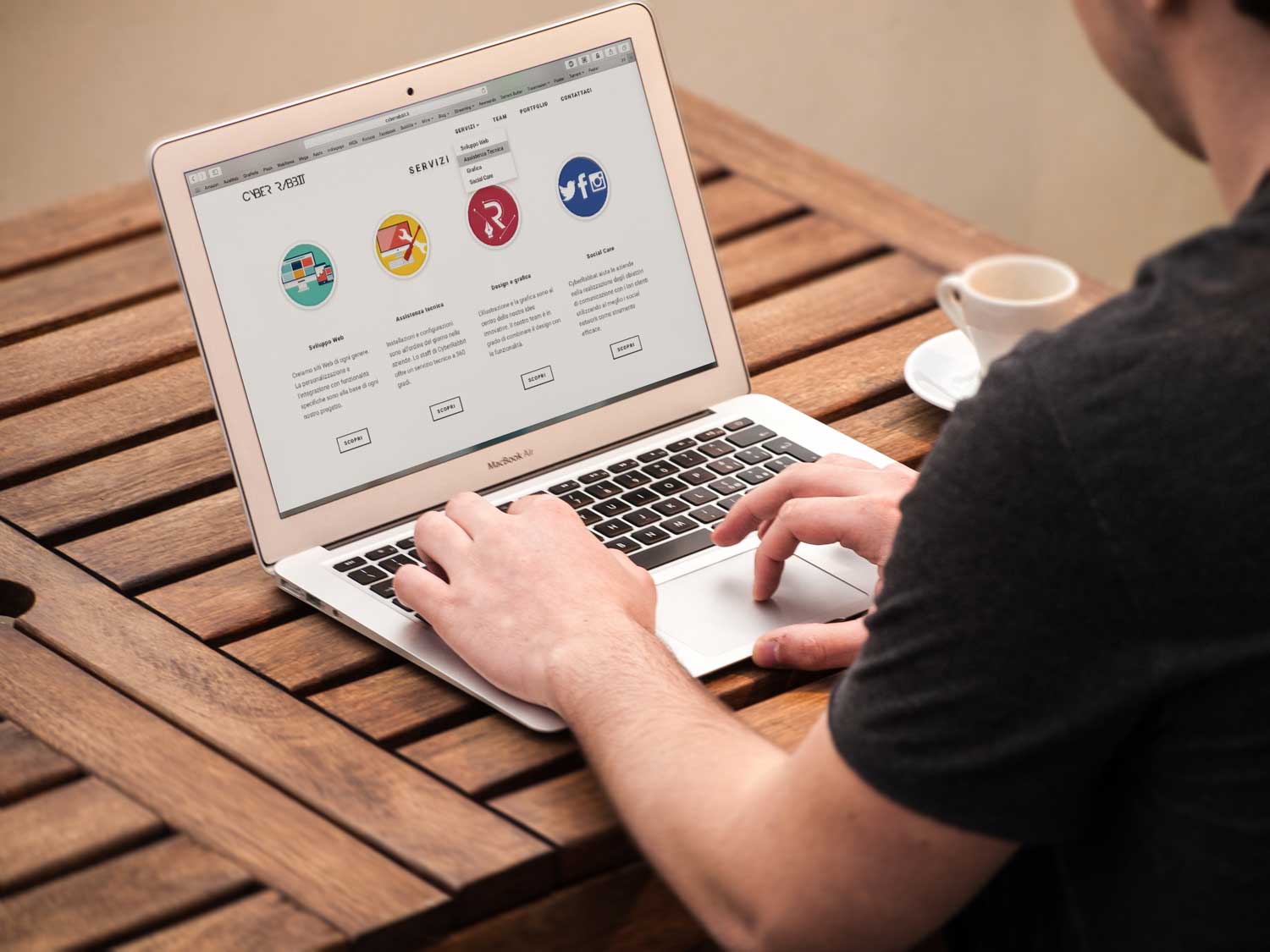31 Efficient Tips & Tricks for Your Shopify Store
Shopify has played a major role in shaping a new era: With the help of cloud store systems like Shopify, now even smaller entrepreneurs without programming skills are able to open a professional online store. And even more importantly at prices that can also be budgeted into the startup phase. In this post, we would like to give you some tips and tricks for your Shopify store.
So what do you need to consider when creating an online store? In this tutorial, we refer to different stages in which you can optimize your Shopify store.
- General tips when getting started
- The planning phase
- The implementation phase
- The day-to-day phase
Especially during implementation and later in the everyday store life, our multichannel plugin magnalister can help you by comfortably increasing your reach. Especially at the beginning, your store is very likely not to have many visitors yet. By connecting online marketplaces like Amazon, eBay, OTTO Market and many more to your store, you will reach your sales goals.
TEST MAGNALISTER IN A 30 DAY FREE TRIAL
Table of Contents
General tips when getting started
Tips for the planning phase
Tips on how to launch your Shopify store
Tips for day-to-day selling on Shopify
Conclusion
General tips when getting started

Don’t be afraid of the IT requirements. The beauty lies within the fact that it is so easy to create a store with Shopify. Thanks to beautiful templates and drag-and-drop editors, you can design a functional and appealing store within a few days or weeks. For all Shopify features and settings, there are online help and video tutorials. Exactly how much time you need depends on the complexity of your project. Of course, if more complex specifics need to be mapped into the store, this may require the use of apps or bringing in developers.
Less is more: Rather start lean and optimized. In other words, limit yourself to the most important products and core features when you create your Shopify online store. Then you will also succeed in creating good content (for example, photos and texts) right from the start. Of course, this also involves creating positive emotions in your potential buyers. Define your target group(s). Ask yourself which images and which approach suit your target group. You can, for example, depict a scooter in front of a white backdrop, or with a laughing child riding it. In the long run, your choice of images should not depend on opinions alone: Hence try it out. Vary the images and test (for example with A/B tests) what works best.
Tips for the planning phase
Before you get started with the setup of the actual store, it is important to get an overview of the requirements of your store project. We will give you some tips, tricks and ideas for the most important areas in Shopify.
The framework: Product data, navigation, legal texts, shipping, payment and checkout
The central question is always:
- What do you need to get started?
Make sure that all the necessary product data is available or budget some time for its creation. Finally, upload the data to your store in a CSV file. Of course, you can still modify the content after the upload.
In addition, it is helpful if you have a rough idea of the navigation of your store.
- Which categories, sections and pages need to be created?
These pages include GDPR compliant legal texts. As a rule, these are:
- Terms & Conditions
- Right of withdrawal
- Privacy policy
- Imprint
To a certain extent, it is a question of style, personality and budget whether you use one of the numerous legal text generators for this purpose, or whether you prefer to call in individual legal advice.
In addition, you should think about how you want your products shipped if they are physical products.
- Do you have a regular shipping partner and your own warehouse, or do you want to use Shopify’s shipping capabilities, such as the Shopify Fulfillment Network?
In terms of payment methods, there is probably very little to be said against using Shopify Payments, as this eliminates the transaction fees charged by Shopify. However, these should not be confused with the service fees that are charged for each payment in the form of a flat and percentage fee. On average, the percentage fee is about 0.3% higher with the Basic plan as compared to the Shopify plan. The fee increases a further 0.2% with the Advanced plan.
Also, decide what data is required at checkout – under Checkout/Settings. Here it is best to follow the guideline: As little as possible, as much as necessary. Because with every additional piece of information you ask for, more people will bail out – be it due to lack of time, mistrust, or frustration.
Content, Shopify SEO tips and marketing strategy
As we mentioned in the beginning, it is also important that you create product images and descriptions that fit the type of product you sell as well as your target group.
Once your content has been entered via the backend, remember to optimize it for search engines, ideally even before the launch. An important principle is: Anything that satisfies site visitors, makes them stay on the page and interact with it is good for search engine discoverability. Some important points are:
- Always include the main keyword in the main headline (H1)
- Repeat the main keyword a few times – but not too often – in the text and subheadings (H2, H3, etc.). (A guideline is that keywords should appear at least once in 200 words, but no more than 3 times in 100 words).
- Include the keyword in alt tags and descriptions of images
- Place internal and external links in appropriate places
- Do everything possible to make your store page as fast as possible and keep it that way (for example, small/compressed images)
- Write good meta descriptions and titles that include the main keyword
A popular and helpful SEO (Search Engine Optimization) tool for your Shopify shop is Yoast SEO.
Furthermore, think about adding a blog to the store. With a blog, you can easily introduce people to your products who are not yet in a concrete buying phase, but who are looking for information on the topic or products. In blog posts, you can address topics and keywords that users want to learn more about while searching for information. These are sometimes only indirectly related to the products but are related to them in some way which means that they can turn prospects into buyers.
In addition, there is the task of developing a marketing strategy at the beginning. Of central importance are the following questions:
- How can you initially boost traffic and purchases?
- Where can your target group be found?
You have to imagine that every store on the web once started from scratch. Websites that only appear on page 34 of Google, Bing or Ecosia are virtually non-existent. You might know it from your own experience: One has to be looking for something very (!) specific to get past the first three pages of search results. Most searchers even click on one of the first three links on the first page. The question here is also whether you are selling a mass or a niche product. The smaller your competition is for the particular search terms, the further up you will appear.
How you become visible, channel streams of visitors to your site and thus very likely boost sales, depends on your marketing strategy. But at its core, it’s about more than that: It’s not just about the number of users, but it’s about directing people with the right needs to your site.
An extreme example: If you run really great ads for shoes, but only sell tents, many people will find their way to your site. But most likely the website visitors will leave your page after 3 to 5 seconds – as soon as they understand that they won’t find shoes here at all. If by chance someone is also looking for a tent, you are lucky. So this means that in a way you are burning money if you create false expectations in your ads.
In the above example, the algorithm of a search engine learns that your site does not offer much to visitors. This creates an important principle: Your ads need to create the exact needs that you can fulfill on the target page. Often it is helpful to exactly repeat the headline of the ad on the linked store page. This way, users know: This is the right place, this is what I wanted – they stay on the page and, in the best case scenario, buy. This then in turn has a positive effect on the organic ranking of your shop.
Tips on how to launch your Shopify store
For the launch of your store we start again with an important principle: Better done than perfect! Don’t dwell too long on small details at the beginning. Bring the store to a level that works for now. Optimization of Shopify is something you can and will keep doing on the side when the store is online.
You may already know the guide in the Shopify Help Center. It serves the same purpose as a Shopify tutorial: Helping you step by step with all the necessary settings at the beginning. This usually includes the following steps:
- Select theme
- Customize and design theme and corresponding templates
- Add products
- Create product categories and assign products to them
- Create product and category pages
- Create other store pages
- Create menus and navigation
It is also helpful to enable the evaluation of (user) data right from the start. This can be done with Google Analytics, Google Search Console, or other monitoring tools such as SISTRIX, XOVI or Semrush. As a rule, so-called tracking pixels must be installed for this purpose. Only with these is it possible for the corresponding tools to accurately record visitor data. Of course, this also applies to social media sites such as Facebook, Instagram and Co.
If you want to use multiple sales channels right from the get go, link your store to online marketplaces. That way, you increase your reach. After all, nowadays many potential buyers search directly on online platforms like Amazon or eBay when they want to buy a product. With magnalister, building this link is possible and easy, thanks to features like attribute and product matching. A smooth upload of products to online marketplaces and convenient shop management and maintenance are guaranteed.
Once everything is working and you have prepared the successful launch as well as you can: Publish! After all, when you jump into the deep end, the online waters are comparatively pleasant.
Tips for day-to-day selling on Shopify

It is now necessary to implement the actions planned beforehand. So, as early as in the beginning, the realization of marketing campaigns needs to boost traffic. If these are well set up, visitors will send positive signals to search engines. This is how the algorithm learns: This website seems to please the searchers/users. They stay, interact with it and find a solution (buy). Since one goal of the search engine algorithms is to satisfy users, these positive signals will push the site higher in the search engines. This shows that marketing can have a positive impact on organic ranking.
Important marketing channels are:
- Social media marketing
- Ads in search engines
- Email marketing
The advantage of social media marketing is that you can meet and address your target market particularly precisely. After all, social platforms can draw on a wealth of data on interests, demographics and personality profiles.
Ads in search engines are displayed for specific search terms, either automatically or defined through you. This means you can achieve a high relevance. Let’s say you sell unicorn stunt kites, then “buy unicorn stunt kite” will be an important search term, with which you may reach fewer people than with “buy stunt kite”. Nevertheless, you will reach people who are particularly motivated to buy your product because of the keyword relevance.
When engaging more in marketing, it becomes important to regularly evaluate the reports from Shopify Reports, Google Analytics, SISTRIX, XOVI or Semrush.
- Which product or store pages have particularly good/bad conversion rates or bounce rates?
- What could be the reason for this?
Now it is about looking for plausible reasons for both good and bad performance of the pages. If things are going well, that means you want to do more of the same.
- Is it perhaps certain images or certain statements that work or just don’t work?
If you don’t want to depend on individual opinions, you can use A/B testing. There are various apps in Shopify that are designed for this exact purpose. In these, variant A (for example, with the product in front of a white backdrop) or variant B (with the product in front of a black backdrop) are randomly displayed. If variant A with a white background works better – i.e. leads to more purchases – than variant B with a black background, this would indicate that Shopify products in front of a white background are most likely better for your store. One catch in the matter: In order for A/B tests to deliver statistically relevant and non-random results, you need high visitor numbers.
Furthermore you should pay special attention to the user experience and the call-to-action (CTA), i.e. especially the text of the buttons. Describe as accurately, concisely and invitingly as possible what happens when buttons are clicked.
Once you have figured out what should be changed in your Shopify online store, you can optimize the pages accordingly and regularly.
Regarding product management, there are many features available in Shopify. This includes bulk processing of products, that is, the processing of many products at the same time. For global sales, there are also many options and tools. Among them are:
- Multi-currency and international price adjustment
- Price rounding
- Automatic tax calculation for digital Shopify products
- Add languages (Settings → Languages)
If you want to grow your online sales on multiple channels at the beginning or over the long run, the magnalister plugin offers you a convenient multichannel solution. Increase your reach by expanding your store sales to platforms like Amazon, eBay, METRO, Cdiscount and many more. With magnalister, you upload products to the various channels very easily in the day-to-day running of your online business – all centrally via your store backend. magnalister also includes many features and possibilities for international sales.
Advanced online merchants will additionally look at automated promotions and notifications in the store. If you want to keep your store scalable in the long run, you have to minimize the effort for employees in that regard. Shopify Flow can be used for this purpose. When certain conditions occur (for example: if newsletter subscriber with cart value > 200 €), you can set certain subsequent actions (for example: then send email with 10% discount for next purchase).
We recommend using popups sparingly. For many users, it is enough to repeatedly allow, restrict or reject the use of cookies. Therefore, consider carefully whether you really need an additional popup. For some users, it will be one click too many.
Something with which especially small companies can stand out from the crowd is accessibility and good service. Therefore, show your availability prominently by implementing a visible contact page, in the main menu or in another central place.
Conclusion
In our Shopify tutorial we have presented the most important Shopify tips for the different phases of your store setup, management and maintenance. We now want to summarize these once again for you.
The general tips:
- Don’t be afraid of the IT requirements when creating a store
- Less is more: Rather start lean and therefore well optimized
- Trigger positive emotions through a visual language that fits your target market
Tips & tricks for the planning phase:
Formal planning:
- First, collect the most important data and prepare it for the store
- Get an overview of the most important categories, areas and pages
- Generate the legal texts or have them created by a professional
- Think about and pick a shipping model
- Choose a payment model (for example, Shopify Payments)
- Define what information you need to ask for at checkout – Rule of thumb here: As little as possible, as much as necessary
Content planning:
- Use good photos and well-written text
- Find out where your target audience can be found
- Answer potential questions that customers are likely to have in blog articles
- Channel people to your site who have the appropriate needs
- Whatever satisfies site visitors is good for discoverability & searchability
- Make sure your advertising (ads) trigger needs that your products can fulfill
Tips & tricks for the launch:
- Act according to the motto: Better done than perfect
- Use the Shopify guide for the implementation of your shop
- Ensure monitoring of your store, for example, by installing tracking pixels
- Connect online marketplaces with your store, for example via magnalister
- Don’t hold back too long and click the “Go live” button in time
Tips & tricks for the day-to-day operation of your store:
- Create marketing campaigns with which you attract your target market as accurately as possible
- On social media, the target market can be identified easily on the basis of interests
- Place your ads for very specific search terms with the help of search engine marketing (SEM)
- Channel people to your site who have a real interest in your products
- Analyze the performance of your pages with appropriate tools
- Do more of what works and less of the rest
- Formulate concise, accurate and inviting CTAs
- Engage in internationalization and multichannel sales, for example via magnalister
- Automate certain processes in the store with Shopify Flow
- Use popups sparingly
- Visibly embed your contact page
If you internalize these tips & tricks for Shopify, you stand a good chance to run your store(s) efficiently and that in turn will increase your chances of success. We wish you all the best in the process! If you have any questions about our magnalister plugin for multichannel sales, feel free to contact us.
Via phone: +49 (0)30 / 120 76 74 12
Via e-mail: support@magnalister.de

